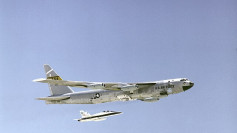The decision to deploy long-range US missiles in Germany from 2026, announced at NATO's 75th anniversary summit, has intensified geopolitical tensions, with Moscow reacting angrily to the move. For the first time since the Cold War, the US will station Tomahawk cruise, SM-6, and hypersonic missiles in Germany. These missiles, boasting significantly longer ranges than existing ones, mark a stark shift in NATO's military posture and have been met with a fierce response from Russia.
"This is just a link in the chain of a course of escalation," Russian Deputy Foreign Minister Sergei Ryabkov declared, accusing NATO and the US of employing intimidation tactics. Ryabkov further warned of a "military response to the new threat," highlighting the heightened tensions between Moscow and Western powers.
The joint US-German statement emphasized that the missile deployment, initially episodic, is intended to become permanent. This move is part of a broader strategy to reinforce US commitment to NATO and bolster Europe's "integrated deterrence." German Defense Minister Boris Pistorius, speaking at the NATO summit in Washington, underscored the necessity for Germany and other European nations to invest in and develop their own longer-range missile capabilities. "We are talking here about an increasingly serious gap in capability in Europe," Pistorius said.
This development follows the collapse of the Intermediate-Range Nuclear Forces (INF) Treaty, a Cold War-era agreement between the US and the former Soviet Union that banned ground-launched missiles with ranges between 500 and 5,500 kilometers. The US withdrew from the treaty in 2019, citing Russian violations with a new type of nuclear-capable cruise missile. Russia followed suit shortly after, leading to an arms race resurgence.
Political reactions within Germany have been mixed. Members of the Greens, a part of Chancellor Olaf Scholz's ruling coalition, criticized the decision. Sara Nanni, the Greens' spokeswoman on security, expressed frustration over Scholz's silence on the matter. "It can even heighten fears and leaves room for disinformation and incitement," Nanni told the Rheinische Post newspaper.
The announcement has not only stirred domestic political waters but has also caught the attention of international security analysts. The deployment is seen as a direct response to perceived threats from Russia, especially given the ongoing conflict in Ukraine. The war, which began with Russia's full-scale invasion in February 2022, has severely strained US-Russia relations. Russian officials and media have frequently called for retaliatory measures against the US for its support of Ukraine.
The US and Germany clarified that the "episodic deployments" are part of planning for the enduring stationing of these capabilities. When fully operational, these units will include advanced conventional long-range fires like SM-6, Tomahawk, and developmental hypersonic weapons. "Exercising these advanced capabilities will demonstrate the United States' commitment to NATO and its contributions to European integrated deterrence," the joint statement read.
As NATO concluded its summit in Washington, the alliance reiterated its support for Ukraine's integration into Euro-Atlantic structures, including eventual NATO membership. "It's not a question of if, but when," NATO Secretary-General Jens Stoltenberg emphasized, underlining the alliance's unwavering commitment to Ukraine.
Russia's sharp response underscores the escalating security dilemma. Ryabkov accused NATO of exacerbating tensions through its actions, stating, "We will develop a military response to the new threat calmly, with a cool head." He framed the US and NATO's strategy as an intimidation tactic, reflective of their broader policy towards Russia.
The deployment of these missiles in Germany is a significant step that signals a shift in NATO's strategic approach. It represents a move towards strengthening deterrence against Russian aggression while prompting concerns about an escalating arms race. As NATO allies prepare for this new phase of military readiness, the world watches closely, aware that these developments could have far-reaching implications for global security dynamics.






